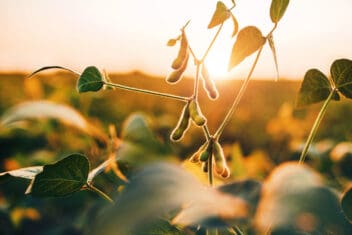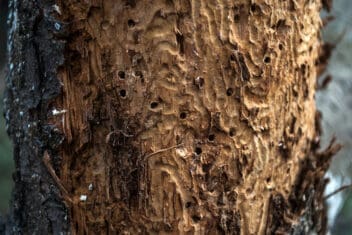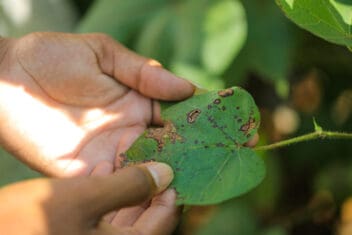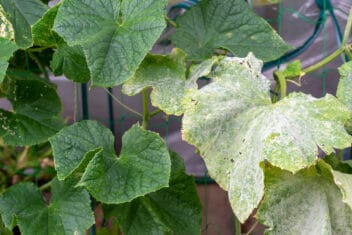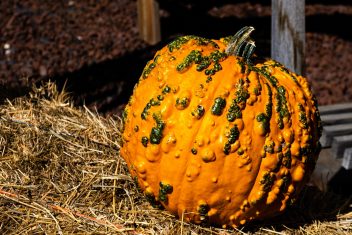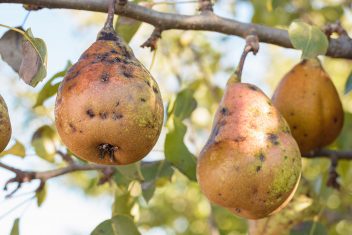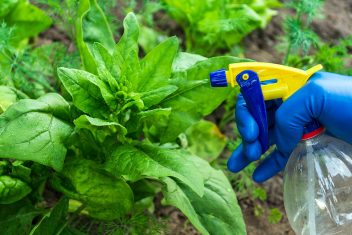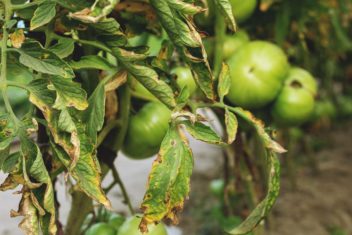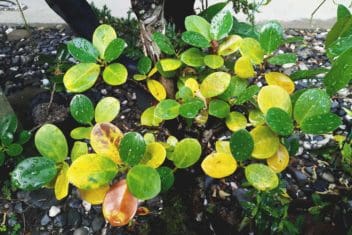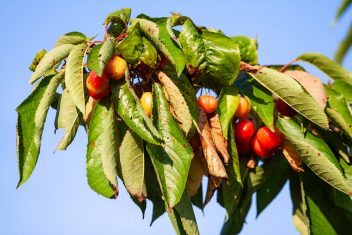Fire blight is a destructive bacterial disease that primarily infects apples, pears, and related tree members. If you grow trees on your property, you need to understand this bacterial disease because it kills the blossoms, shoots, and limbs. It’s not uncommon for fire blight to kill entire trees!
Unfortunately, controlling fire blight is difficult, so we’ll cover essential preventative measures you need to know. Let’s learn what fire blight is and the symptoms it causes on your tree.
What is Fire Blight?
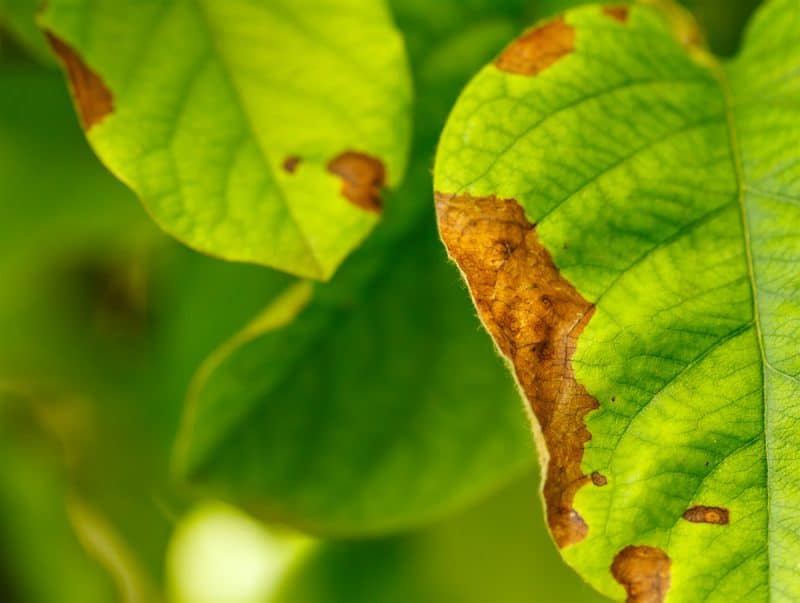
Without a doubt, fire blight is one of the most dreaded bacterial diseases that infect fruit trees and shrubs. Preventative measures help to decrease the risk of the disease taking over your entire tree, but it’s nearly impossible to eliminate. Take care if this disease is in your area.
Fire blight is a bacterial disease that affects trees and bushes, along with landscape planting, so most plants aren’t safe from this disease. It got its name because of the scorched appearance it causes on the infected leaves.
It’s caused by the bacterium Erwinia amylovora, and it’s most common on pome trees. Pear and quince trees are highly susceptible, along with apple, crabapple, and firethorn trees. Less commonly, fire blight infects hawthorn, loquat, mountain ash, and other related plants.
This disease is influenced by seasonal weather and prefers to attack the plant’s blossoms, gradually moving to the twigs and branches of the plant. It causes the blossoms and twigs to have a burnt appearance, making identifying this disease easy.
The Lifecycle of Fire Blight
This bacteria overwinter in the cankers on the twigs, branches, or trunks of the host trees. Then, in the spring, when the weather starts to get warmer and moist, a small number of cankers become active again. The bacteria starts to spread and multiply.
This bacteria spreads via wind, hail, or insects, so if it finds a tree or shrub with injuries on the young leaves or shoots, it can easily invade. It spreads rapidly when the weather is warm yet rainy or humid.
Tree vigor influences the extent of the damage. Healthy trees are less at risk. Once the disease establishes itself in your trees, the pathogen moves through the weaker parts of the trees and finds other vulnerable hosts nearby. Young trees are more likely to be infected and suffer from serious damage.
What Are The Signs of Fire Blight?
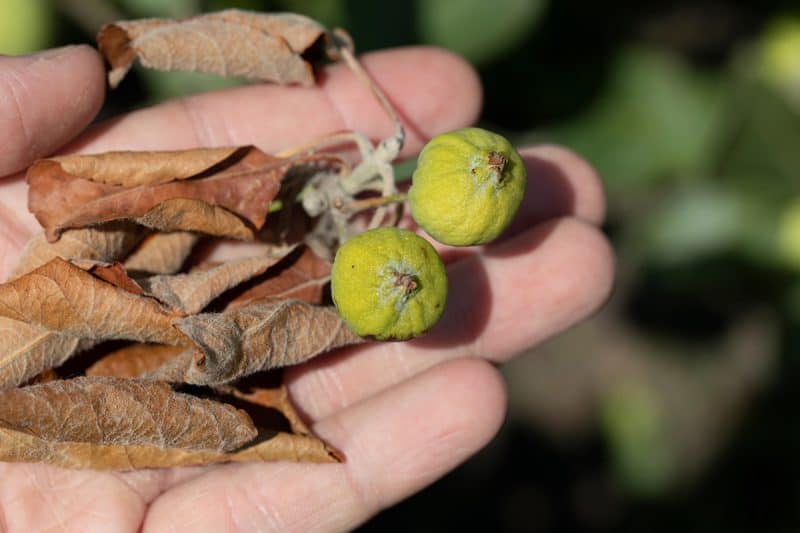
The symptoms of fire blight start as soon as trees and bushes start to actively grow in the spring. These bacteria prefer to attack the open flowers first, remaining in the flowers until the petals fall.
Sometimes, the infection stays localized in the flowers, but you have a serious problem on your hands if it starts to spread. When it spreads to the wood, you will find pink to orange-red streaks underneath the bark.
Another sign is often a light tan to reddish, watery ooze that comes from infected parts of the tree, like twigs, branches, and trunk cankers. Gradually, the ooze darkens after exposure to air. It leaves dark streaks on the tree.
Tips of the shoots rapidly wilt, forming a tell-tale shepherd crook-like figure. The leaves on the shoots might have blackening along the midrib and veins before becoming fully necrotic. Numerous diseased shoots give the tree a burnt appearance.
The infection spreads through the rest of the tree, causing the flowers to turn brown. The twigs and flowers wilt, shrivel and blacken, then they curl at the ends. When fire blight has time to spread and become severe, cankers form on the branches that ooze.
Needless to say, fire blight is often fatal to trees and shrubs. This bacteria is serious!
How to Prevent Fire Blight
Treating fire blight is difficult, if not impossible, so preventative measures are of utmost importance. If you hear that someone in your area has fire blight, make sure you’re using these practices.
Pick Resistant Varieties
One thing you can do to prevent fire blight from destroying your fruit trees is to pick resistant varieties. Many pear tree varieties, including Asian and red pears, are susceptible to fire blight. Several apple varieties are susceptible as well, including Fuji, Gala, Golden Delicious, Granny Smith, Pink Lady, and Jonathan.
Try to plant varieties that are less prone to fire blight damage. The infections begin in the flowers, so trees that bloom late in the season often have worse damage than other trees.
Avoid Overhead Irrigation
One of the most common ways to spread bacteria is by overhead watering. This causes infected soil and water to splash onto the leaves of the plant. It’s one of the most common ways that diseases and infections spread, so always water at the base of your trees or shrubs.
Clean Garden Tools
Another way that bacteria spreads is via gardening tools that have never been used on infected trees. Tools need to be sterilized in an alcohol or bleach solution. Make a solution of three parts denatured alcohol to one part water or one part household bleach to nine parts water.
Make sure you thoroughly dry your tools after washing them to prevent rust. Oiling helps as well.
Keep Your Trees Healthy
These bacteria prefer to attack weak or young trees. It’s more likely to spread rapidly when it finds susceptible trees that are weak, so keeping your trees healthy is vital. Fire blight is less likely to attack your tree and cause major damage if it’s healthy and strong.
Can You Get Rid of Fire Blight?
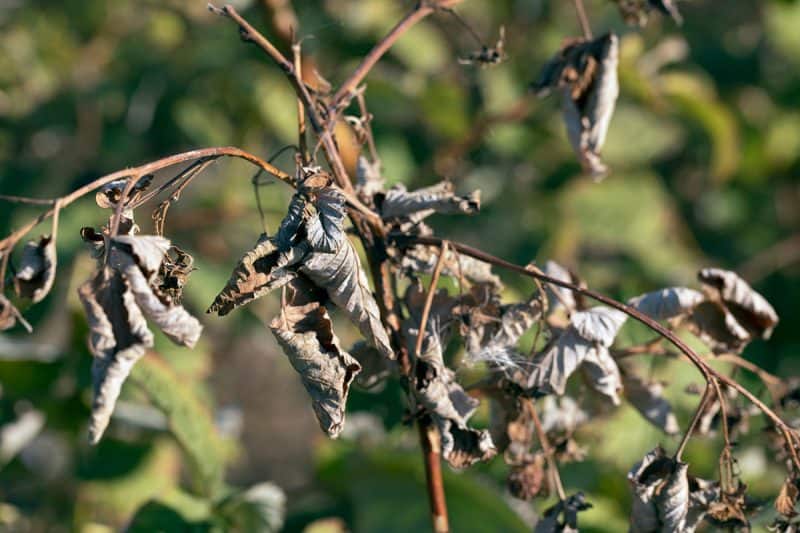
Unfortunately, there is no cure for fire blight, but that doesn’t mean there aren’t some methods you can try to slow the spread.
Prune the Trees and Shrubs
Experts recommend that you regularly prune your trees and shrubs, and remove any infected stems or branches on your tree. Removing parts of your tree that have fire blight helps to slow the spread.
Removing diseased wood is best done in the summer or winter when the bacteria isn’t actively spreading throughout the tree. It spreads most often in the spring and fall, so pruning during times that the cankers aren’t enlarging anymore helps to stop the spread.
However, if you notice rapidly spreading infections on susceptible trees, remove these branches as soon as the infection appears in the spring. Make sure you clean the pruning shears between each cut with bleach.
Scrape the Bark
So, what do you do if the fire blight infection is on the trunk or major limb that you can’t prune off? It’s possible to save the wood by scraping off the bark down to the cambium layer in infected areas. That means you need to remove the outer and inner bark.
Remove all discolored tissued plus six to eight inches more beyond the infection. It’s best to do this in the winter when the tree and disease are dormant. Don’t put any dressing on the wound.
Use Bactericides
Another method that you can use that might hopefully work is spraying the trees with bactericides. Some bactericides have been developed to fight fire blight, although they aren’t always effective.
Some gardeners use fixed copper products as a treatment for fire blight, but this method only reduces the bacteria’s ability to survive and reproduce. It won’t necessarily eliminate it.
For sprays to work, they need to be applied to open blossoms, so you’ll need multiple applications depending on the length of the blooming period for your particular tree. When the blossoms start to open, apply the spray when the temperature doesn’t go above 60°F.

